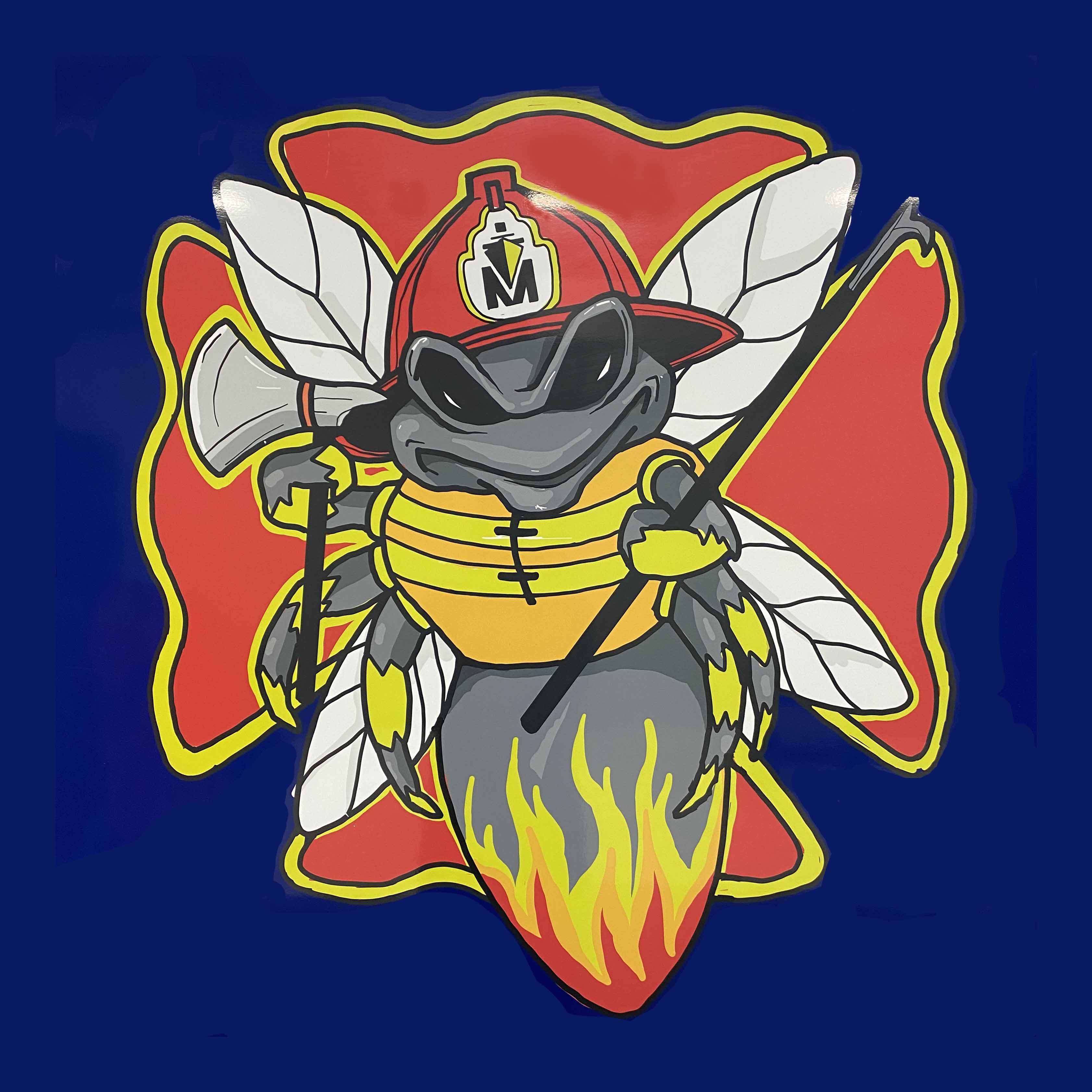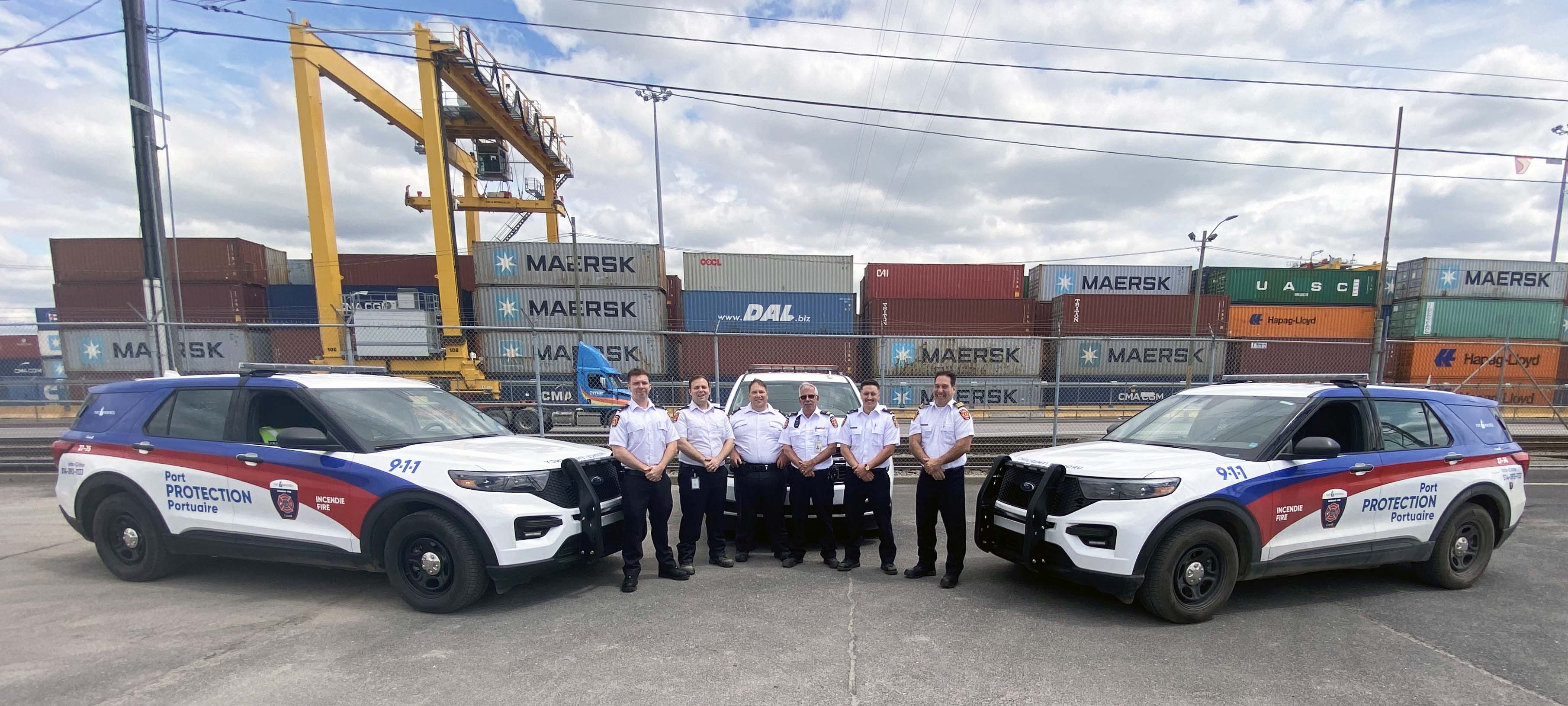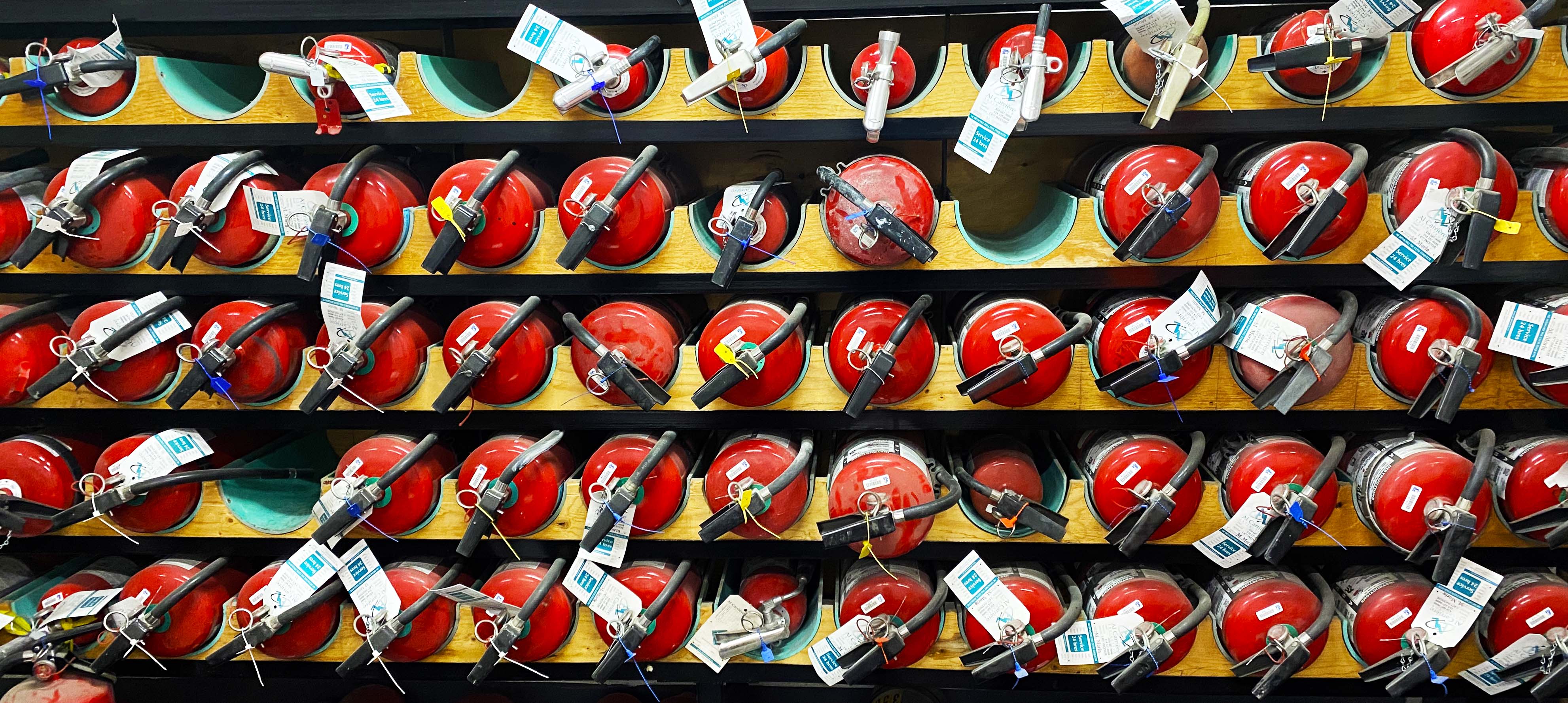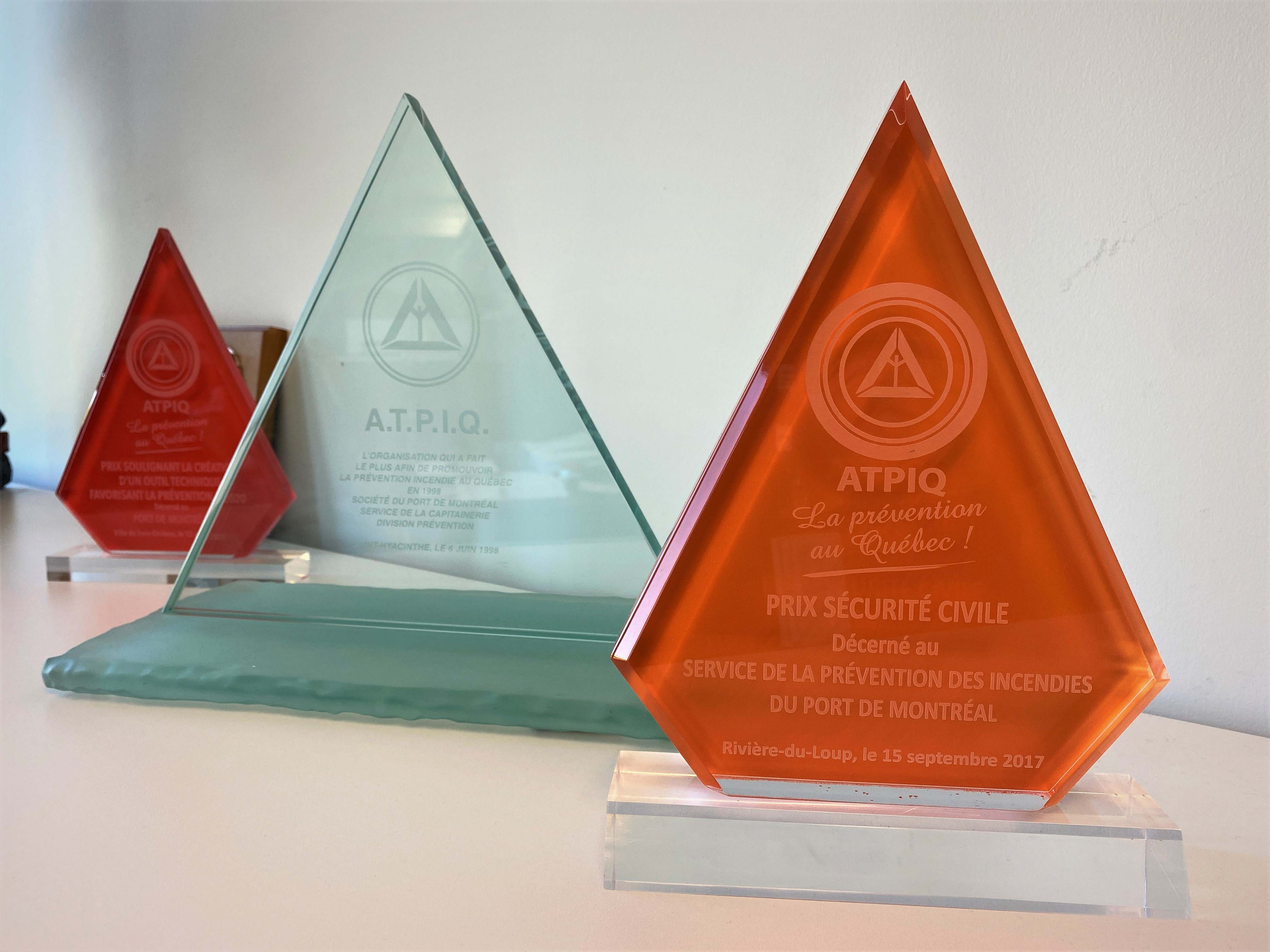
The Port of Montreal’s ‘fireflies’
Watch and ward away
The Port of Montreal is the only Canadian port with its own fire prevention department. Its role? Keep a watchful eye at all times and respond fast on Port territory.
On a mission
Created more than 60 years ago, the department, which today consists of six fire prevention officers, patrols the Port year-round. On the docks, they even have a nickname - ‘fireflies’ - given by the Port’s longshore workers to this mobile team trained in fire prevention, whose main mission is to safeguard a territory as vast as it is diverse.
“We ensure peace of mind for people, not only for those who work on the port and employees but also for the neighbours,” said Stéphane Préville, a fire prevention officer at the Port of Montreal for 28 years.
Along the 26 km covered by Port territory on the Island of Montreal and with 40 million tonnes of cargo handled annually, there is an impressive range of products, activities and equipment that cannot be left to chance.
In all, nearly 70 structures—including huge century-old buildings, sheds, silos, electrical stations, storage tanks and more—must be inspected regularly to ensure compliance with established standards. “Grain elevators, for example, are high-risk buildings because the airborne dust that stays inside is explosive,” said Dany Rochon, Deputy Harbour Master, Fire and Hazardous Materials. At the terminals, it is also important to make sure that goods are stored in an appropriate location, for instance to avoid “placing wood pallets near welding operations.”
Over the years, the Security and Fire Prevention department has become more and more efficient and versatile. These days, the team issues burning and welding permits, manages complaints (in collaboration with other Port teams), manages spills, oversees event compliance at the Grand Quay, manages the training of the emergency response structure in case of major events, and authorizes all requests for renovations or space reorganization in keeping with the standards in effect.
Our fireflies are also called upon when outdoor events take place near Port facilities. Name one? “Fireworks at La Ronde,” said Dany. “We make sure that there is nothing flammable or dangerous anywhere in the potential fallout area of the fireworks, including the rail cars waiting on the tracks.”

From left to right: Sébastien Major-Forest, Francis Roberge-Perron, Stéphane Crevier, Michel Brunet, Phillipe Brouard and Dany Rochon
Materials under surveillance
The Security and Fire Prevention team also oversees the handling of hazardous materials that pass through the Port of Montreal.
What are hazardous materials? “It could be chlorine that people put in their swimming pools, or fireworks that are delivered by ship, but also aerosol bottles, ammunition for hunting rifles or sulphuric acid used in the metallurgical industry.”
Each material to be tracked is identified by an international code established by the United Nations.
“In some cases, we need to be present during the unloading process to verify that the materials are being handled according to protocols and that they are stored in the right place. We also make sure they don’t stay in the Port of Montreal and have left within 72 hours.”
When a ship is bunkered with LNG—a service that has been provided at the Port of Montreal since 2017 in collaboration with Energir—the team deploys a device to counter potential gas leaks. “We arrange for half-moon water curtains that can go 15 feet up around the gas source. If there is a leak, the LNG, which is at minus 160 degrees Celsius, will rise vertically as it condenses, hit the water curtains and evaporate high above.”
When does the team have to respond urgently? “A container can be damaged or cracked,” said Dany. “We respond if there is a spillage risk. The team sets up a safety perimeter, evacuates the area and establishes a response strategy to plug the leak. If necessary, they call in the municipal fire department. "Ninety-nine percent of the time, we can resolve the situation. We’re the experts in the field, but we don’t have the equipment to match the calibre of the city’s fire department.”
Becoming a fire prevention officer
What kind of training does it take to practice this profession? Port of Montreal fire prevention officers are all Level 1 firefighters who have earned their fire prevention technician certification. They must also have the Level 2 first responder diploma to respond to an injury.
With 25 years of experience under his helmet, Dany has been involved in all aspects of the job during his career, having been a municipal firefighter before working in the mining, gas and now marine sectors. His passion? "Developing the skills of my team," he said.
His preferred tool for training is virtual reality. Using three-dimensional models of the Port of Montreal, fire prevention officers can practice responding to different scenarios and rolling out protocols, in addition to planned on-site practices and exercises at terminals or aboard vessels.
As for the qualities required to do the job, Stéphane highlighted "resourcefulness, a sense of duty, good knowledge and physical fitness.” But in terms of love for the job, "It's hard to beat," he continued. "It’s a huge playing field and there’s no time to get bored!”


